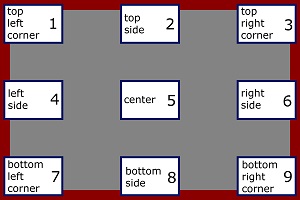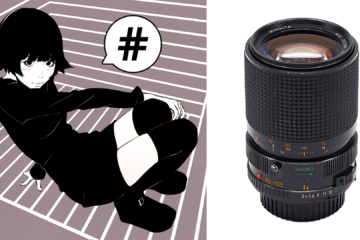Minolta MD 24mm 1:2.8 VFC – review

Minolta MD 24mm 1:2.8 VFC – vintage manual lens test and review
- Official classification: New-MD
- Collector’s classification: MD III
Once upon a time, this site was created to make reviews for all existing rectilinear and non-special Minolta New-MD lenses. This goal has been achieved – all 21 are presented on the site. But why not continue with other lenses and maybe with other labels? This review is the first of its kind.
Important note:
this review doesn’t contain tests of Variable Field Curvature -‘VFC’ feature of this lens. It will be done later. Here you can get information about how this lens works in normal mode. Welcome
Minolta MD 24mm 1:2.8 VFC (MD III, New-MD) specifications
| # in minolta.eazypix.de index | 35 |
| Name engraved on the lens | MD VFC |
| f[mm] | 24 |
| A max [1/f] | 2.8 |
| A min[1/f] | 22 |
| Lens design [el.] | 9 |
| Lens design [gr.] | 7 |
| Filter thread Ø front(rear)[mm] | 55 |
| Lens Shade | clip-in |
| closefocus[m/ft] | 0.3/1 |
| Dimension Ø x length [mm] | 64.5×50.5 |
| Weight[g] | 340 |
| Year | 1982 |
| Style | MD III |
| Code No. (ROKKOR-X) or Order No. | 615-818 |
More data
| Floating elements | YES (partial support by autofocused adapters) |
| Aperture blades number | 6 |
| Confidence in the test results of reviewed copies | High |
| Reviewed lens SN: | 8001416 |
- Minolta MD VFC 24mm F2.8
Minolta MD 24mm 1:2.8 VFC exterior
Minolta MD 24mm 1:2.8 VFC mounted on Minolta X-700
This is a very suitable set – the camera and lens have the same design (camera is released in 1981, lens in 1982)
Minolta MD 24mm 1:2.8 VFC lens-shade
Minolta MD 24mm 1:2.8 VFC sharpness
Сlose-distance resolution test, minimal distance
Testing methods description
- Target: 10-15 cm picture, printed on glossy photo paper
- Distance:10% longer than minimal focus distance marked on the lens
- Camera: Sony A7II (24mpx, full-frame, tripod, remote control). M-mode, ISO fixed, WB fixed, SteadyShot – OFF.
- The test was repeated for every F-stop on every focus position with manual focus adjustment for each shot. That is to avoid the effect of field curvature.
- RAW processing: Capture One, default settings. All quality settings – 100%. Crops – 300×200 px
Scene preview
Original target image (printed in horizontal orientation on 10cm X 15cm glossy photo paper)
Test results (selected version, easy to compare – 4 positions)
Test results (full version – all 9 positions):
Long-distance resolution test
Testing methods description
- Target: cityscape
- Distance: > 200 meters to center focus point
- Camera: Sony A7II (24mpx, full-frame, tripod, remote control). M-mode, ISO fixed, WB fixed, SteadyShot – OFF. The focus point is on the center only.
- RAW processing: Capture One, default settings. All quality settings – 100%. Crops – 300×200 px
Scene preview
Test results
Minolta MD 24mm 1:2.8 VFC aberrations
Vignetting
Geometric distortion
Coma aberrations
Chromatic aberrations
Short-distance bokeh
Test conditions: lens was focused on minimal distance 0.4m, plants are in 2m distance from the camera
Long-distance bokeh
Test conditions: the lens was focused on half distance on the scale (0.7m), buildings are on “infinity”-distance. This is a rare case for real photography but demonstrates the maximum possible level of blur
Light bubbles bokeh
Test conditions: lens was focused on minimal distance + 10% of scale (about 0.4m), diodes were fixed in 2m distance
Light bubbles bokeh
The lens is on the minimal focusing distance 0.4m, lights are on infinity (cityscape)

Minolta MD 24mm 1:2.8 VFC (or Minolta MD 24mm F/2.8, New-MD, MD III design) – overall conclusion
It’s not easy to describe this lens independently of fact, that Minolta has another MD 24mm F2.8 lens without VFC functionality, but four times cheaper, half smaller, twice lighter, and with a better optic quality. I think that photographers should get VFC-lens only if the VFC option is needed. A good bonus – with this lens there no necessity to buy rectilinear Minolta New MD 24mm F2.8.
Of course, VFC lenses become rarer – only Minolta made such items in a short period, in small amounts, production has been stopped in 1980x and all of it now are objects of hunting for not only Minolta-collectors but for collectors of overall photo-gear. In other words – fish-eye, shift, soft-focus, etc. – these unusual types of lenses can be found easily because a lot of companies developed it, but VFC is an exclusion – only Minolta made such exotic tools, that’s why this VFC-lenses have a big historical value.
But if we forget about these facts, then we have an excellent wide lens, one of the best at this focal length – very usable in common everyday photography if wide-angle is needed. The lens has no chromatic aberrations even wide-open, it shows ideal geometry, it is ready for landscapes from F5.6 and for close-up photography from F2.8.












































2 Comments
Rafa · 2019-07-07 at 12:15
Hello,
Do you check for lens/adapter centering, so all four corners have the same performance?
Tony · 2019-07-07 at 13:14
This question is rude and impolite, don’t you think so? 😉